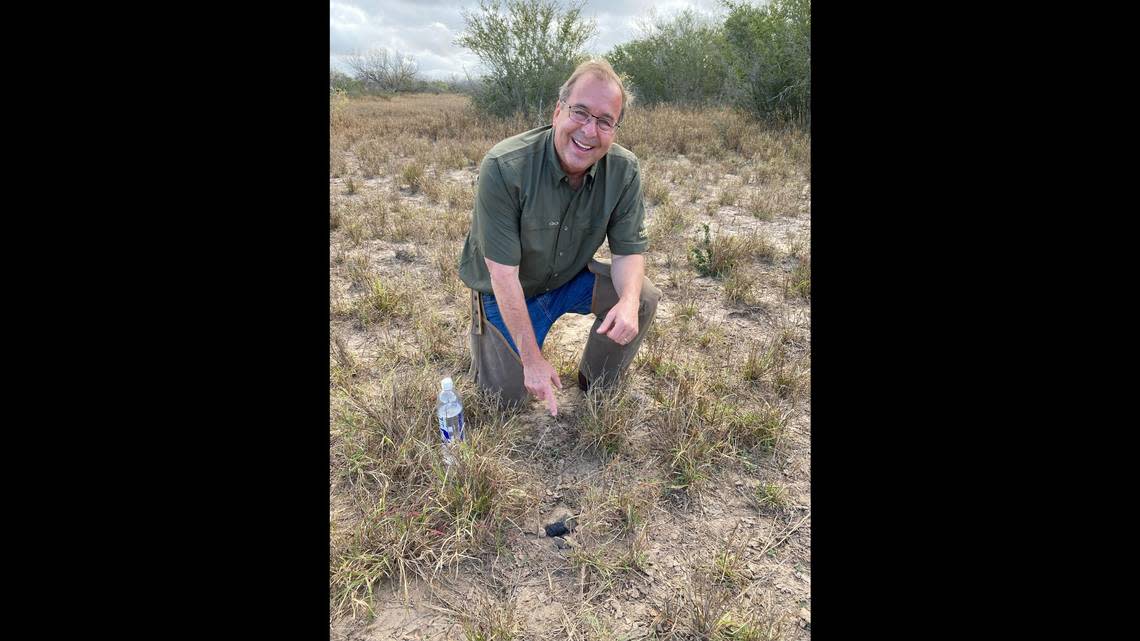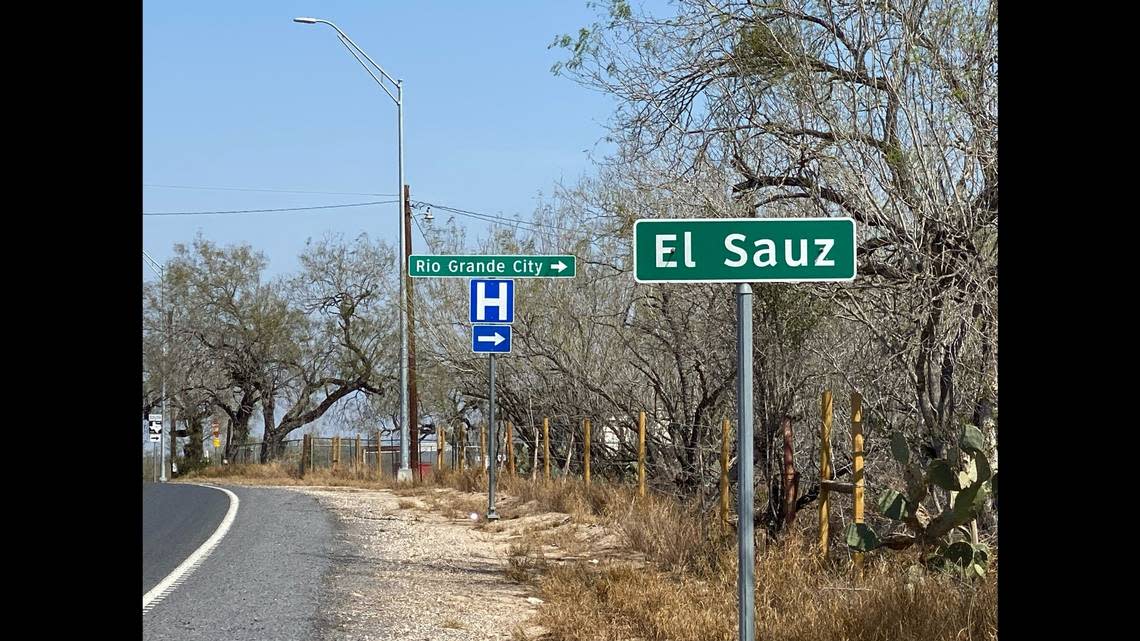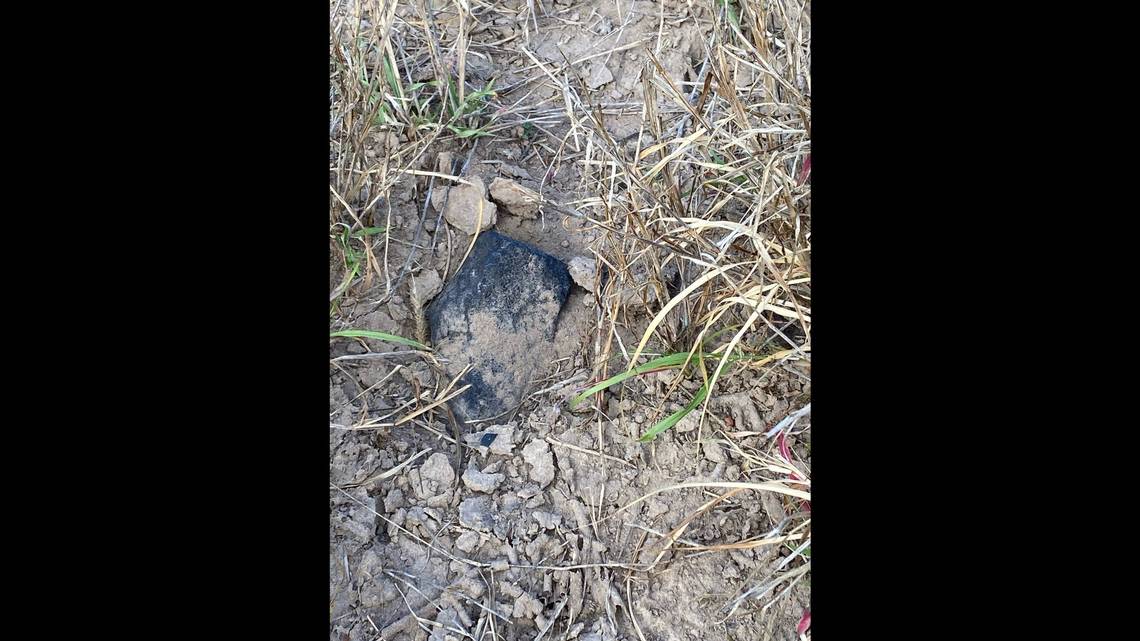Meteorite hunters raced to south Texas after startling ‘boom.’ Here’s what they found
The startling kaboom heard across south Texas in mid-February might as well have been a starter pistol.
For many, it was at first a mystery. Calls poured in to police departments around McAllen and nearby communities, with people wanting to know what that earth-shaking sound was, McClatchy News previously reported.
The thunderous clap was a sonic boom caused by a 1,000-pound meteor hurtling down on Feb. 15, NASA later confirmed. Some caught sight of it burning overhead, visible even in daylight, moving at 27,000 mph and with energy equal to 8 tons of TNT.
It broke apart 21 miles above the Earth and while most of the meteor disintegrated, a remote swath of rugged Texas landscape was showered with what little remained — meteorites raining down into sandy soil and grass and scrub, waiting to be found.
The hunt was on.
No time to waste
“The more quickly they can be recovered, the more pristine the sample is,” Phil Mani told McClatchy News. The more pristine the sample, the more valuable it is to science, to the public, or to the people who want to buy it.
That last group is of the least concern to Mani, he says. The meteorite hunter admits money is some motivation, but it pales next to the knowledge that can be gained and shared, not to mention the thrill of the hunt itself.
“The hunting is always exciting,” Mani said, and it’s something the Fort Worth-based oil and gas attorney has been doing for roughly 20 years.
So there’s a race to beat the elements, but also a race to beat other hunters, some of whom have more interest in profit than science, he said.
“(Science) has always been my primary motivation … and it is the motivation for some others. But we’re kind of few and far between we feel sometimes,” Mani said.

When the Feb. 15 fireball arrived, he was immediately in contact with other enthusiasts like himself. Soon he was on the road, driving 8 hours south to a remote ranch near El Sauz, a small community a stone’s throw from the U.S.-Mexico border.
NASA released a map the day after the meteor arrived, highlighting an area where meteorites would have likely fallen, and the impromptu search party of four, Mani included, used this as their starting point.
Marc Fries, a planetary scientist with NASA, put that map together, starting with reported meteor sightings and then honing in using radar and satellite data, he told McClatchy News. He and his wife made their way to where the strewn map indicated meteorites would have landed and were later joined by Mani and pro meteorite hunter Robert Ward.

Once in the zone, they soon realized that the meteorites must have crashed down on a particular ranch in the area, private property, Mani said. He spoke with the owner and after some convincing, the four hunters were given permission to search his land.
“He was quite reluctant until he was comfortable that the team coming out there was properly vetted … scientifically minded and goal oriented,” Mani said.
He understands the hesitation.
“There were a lot of people who had descended on the area, running around from location to location, trying to gain access,” Mani said. Ranchers are often private people and “once it gets out that a meteorite has fallen, they certainly don’t want people cutting fences to get in.”
The hunt
They set about searching the property for meteorites and fragments, eyes open for rocks with a telltale black exterior, a crust formed by extreme heat during descent through the atmosphere.
The weather was warm, and Mani wore boots and chaps to protect from snake bites and rough vegetation as he walked. Driving an ATV or riding on horseback is the wrong approach, he says; finding meteorites is best done on foot.

“It’s pretty rough country … I think every plant down there except for the grass has thorns,” he said. “It has to be boots on the ground. Looking here, looking there, looking through the brush, under the brush. It sure was fun though.”
Since they started their hunt, the group has recovered five meteorites, one of which has been taken to Houston for analysis to determine its classification and what it’s made of, Mani said.
The fate of the meteorites Mani’s group found is ultimately in the hands of the rancher whose land they fell upon. He gets to decide what to do with them — if they’ll be donated for research, loaned to a museum, or sold to private collectors, Mani said.
The rancher is allowing one of the best specimens, the one currently being analyzed in Houston, to be donated to the Monnig Meteorite Collection at Texas Christian University, Fries told McClatchy.
Meteorites and similar artifacts should be shared, Mani said. Early in his meteorite hunting days, he started a company, Radiant Point, for that purpose.
“My primary motivation with what I do … is to not only recover and curate these specimens for planetary research, but also to give loans for scientific research and for general outreach,” he said.
Meteorites are coveted for various reasons and sometimes even the most spectacular space rocks are commodified in ways that seem, to Mani, wasteful.
“Years ago, I saw a beautiful specimen in Tucson be broken up and divided among 8 different collectors. It was a slice of a lunar meteorite and it was beautiful,” Mani said. “I saw it broken up and put into separate baggies to then be sold on Ebay.”
Researchers could have gleaned valuable information by studying the moon fragment’s lithology — its traits and characteristics. Instead, that info “has been lost forever,” he said.
Mani is hopeful the meteorites collected near El Sauz won’t be “hidden away,” he said. “They should be available to see.”
More unaccounted for
The hunt isn’t over.
At least 90 percent of the meteor is estimated to have burned up, but that means 50 to 100 pounds survived as meteorites, Mani said. So far, his group has collected roughly 9 pounds.
That’s a great deal still unaccounted for.
He’ll continue looking for as long as he’s allowed to do so, but there’s no way he or his colleagues will find every piece, and that’s fine by them.
“The ones that haven’t been recovered are going to be exceedingly difficult to find,” Mani said. “They may be finding them for years out there.”
‘Startling’ green fireball reported soaring over Carolinas, meteor society says
What’s this space ‘disco ball’? NASA shares new photos of a regular part of your life
No, ominous purple cloud and soot on cars in CT didn’t come from Ohio train derailment
Watch meteor illuminate night sky in emerald and orange before crashing in France
